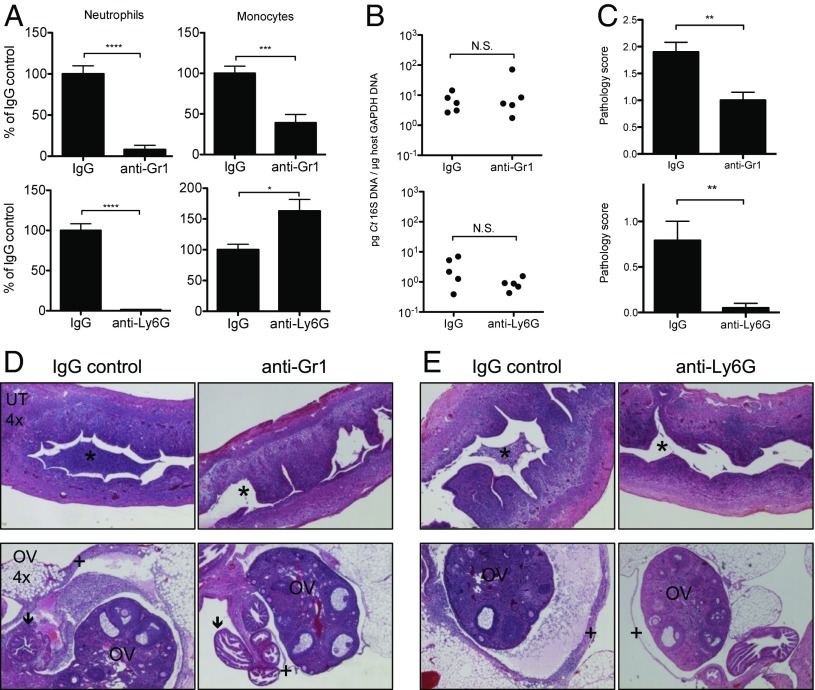Fig. 3.
Depletion of neutrophils ameliorates genital tract immunopathology following C. trachomatis infection, but does not affect bacterial burden. Ct D-infected mice were depleted of neutrophils using either anti-Gr1 or anti-Ly6G monoclonal antibodies and their matching isotype controls (IgG) and assessed at day 5 postinfection. Depletion was detected and quantified by flow cytometry using a detection epitope other than the one used for antibody-mediated depletion. (A) Quantification of neutrophil depletion by anti-Gr1 (Top) and anti-Ly6G (Bottom). Monocytes are also partially depleted by anti-Gr1 (Top). Neutrophils: IgG vs. anti-Gr1, ****P < 0.0001; IgG vs. anti-Ly6G, ****P < 0.0001. Monocytes: IgG vs. anti-Gr1, ***P = 0.0003; IgG vs. anti-Ly6G, *P = 0.0163. (B) Bacterial burden in the upper genital tracts of mice treated with anti-Gr1 (Top, P = 0.42) or anti-Ly6G (Bottom, P = 0.10). N.S., not significant. (C) Upper genital tract pathology scores for anti–Gr1- (Top, **P = 0.0012) or anti–Ly6G-treated (Bottom, **P = 0.0012) Ct D-infected mice. (D and E) Representative H&E-stained sections of Ct D-infected uteri (Top) and ovaries (Bottom) treated with anti-Gr1 (D) or anti-Ly6G (E). *, uterine lumen; OV, ovary; arrow, oviduct; +, ovarian membrane, where pathology is ameliorated by both anti-Gr1 and anti-Ly6G.

